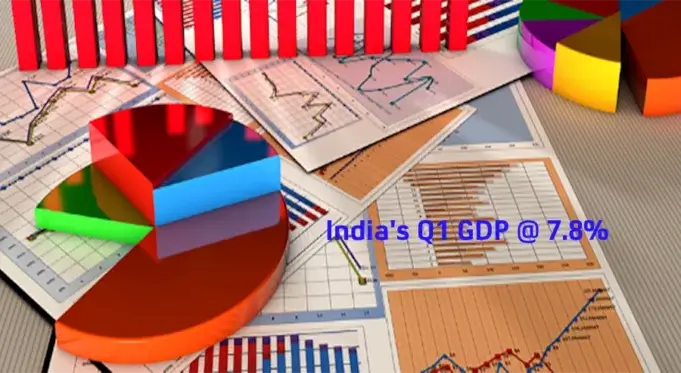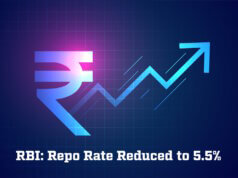As per the press note released by the National Statistical Office (NSO) of the Ministry of Statistics and Programme Implementation on August 31, 2023, the Gross Domestic Product (GDP) for the April-June quarter of the fiscal year 2023-24 (Q1/FY24) registered a growth of 7.8 percent when measured in constant prices.
The Real GDP measured at constant (2011-12) prices, for Q1/FY24 is estimated to have reached Rs 40.37 lakh crore. When compared with Rs 37.44 lakh crore of GDP recorded in Q1/FY23, this indicates a growth of 7.8 percent. This growth rate is lower than the 13.1 percent growth observed in Q1/FY23.
Similarly, the nominal GDP, which is measured at current prices, for Q1/FY24 is estimated to be Rs 70.67 lakh crore. Compared with a year ago statistics of Rs 65.42 lakh crore in Q1/FY23, indicates a healthy growth of 8.0 percent. However, this growth rate is lower than the whopping 27.7 percent growth recorded in Q1/FY23 (post COVID19 lockdown period).
Dr. V. Anantha Nageswaran, the Chief Economic Adviser (CEA) of the Ministry of Finance, highlighted that India’s growth rate of 7.8 percent in the year-on-year comparison places it ahead of several other major economies. Dr. Nageswaran further stated that India’s macroeconomic stability and growth prospects remain strong, and the Q1/FY24 GDP data reaffirms the government’s effective management of the macroeconomy, especially during the challenging years of the COVID-19 pandemic.
India’s economic growth maintained the strong momentum witnessed in the final quarter of FY23, he added. This was driven by increased capital expenditure at both central and state levels, heightened consumption demand in rural areas, and improved performance in the services sector.
A significant positive aspect for the Indian economy is the ongoing private sector capital formation, which bodes well for future employment and income growth. Dr. Nageswaran noted the rise in rural demand for higher value Fast Moving Consumer Goods (FMCGs) and a similar trend in small towns, contributing to overall growth. Despite a global economic slowdown, the services sector exports demonstrated remarkable performance. Both manufacturing and services sectors are expanding, and rural demand recovery is evident, leading to income growth.
The CEA pointed out that the construction material sector’s growth will be supported by the residential real estate sector. The government’s consistent focus on capital expenditure has encouraged private sector involvement, contributing to growth. The CEA also noted that inflation is under control but requires monitoring.
In conclusion, Dr. Nageswaran emphasized that investment and consumer momentum will be key drivers of solid growth prospects in the upcoming year. The private sector is expected to contribute to stronger investment growth as corporate and bank balance sheets strengthen, aided by government capital expenditure initiatives.
Anticipating a decrease in food inflation with the influx of fresh stock and pre-emptive government measures, he mentioned that initiatives like PM GatiShakti, the National Logistics Policy, and Production-Linked Incentive schemes will enhance manufacturing output.
The Quarterly Estimates of GDP are generated using the benchmark-indicator method. This involves extrapolating quarterly estimates from the previous year using relevant indicators that reflect sector performance. Data from various Ministries, Departments, and Private Agencies are valuable inputs for compiling these estimates. Key indicators include the Index of Industrial Production, financial performance of listed private companies, crop and livestock production targets, transportation metrics, and more.











